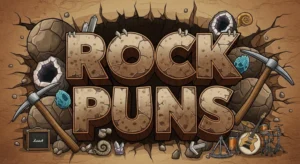Introduction to Slot Games
Slot games have captured the hearts of millions of players around the world, both in bustling casinos and in the digital realm of online gaming. At their core, slots are a simple yet thrilling form of entertainment insert a coin (or credit), spin the reels, and hope for a winning combination. But beneath that simplicity lies a fascinating blend of technology, psychology, and design that makes slots one of the most played games in gambling history.
In the modern era, the word slot isn’t just tied to those traditional one-armed bandits with spinning fruit symbols. It now encompasses a wide variety of styles — from three-reel classics to high-definition video slots filled with bonus features, cinematic animations, and immersive soundtracks. Whether you’re playing a machine in Las Vegas or spinning from your phone at home, the basic thrill remains the same: anticipation with every spin.
What makes slots particularly popular is their accessibility. Unlike poker or blackjack, there’s no need to learn complicated rules or strategies to get started. You simply choose your bet amount, hit the spin button, and enjoy the ride. That’s why both beginners and seasoned gamblers find them appealing.
Interestingly, slots have also evolved to fit into a wide range of themes, from ancient civilizations to blockbuster movies. Game developers design them not only for payouts but also for entertainment value. This combination of luck, excitement, and engaging visuals is why slot games remain a top choice for casino players worldwide.
In this guide, we’ll dive deep into how slots work, the different types available, and the strategies you can use to get the most out of your gaming experience. Whether you’re completely new to the concept or a veteran looking to expand your knowledge, you’ll find everything you need to understand and enjoy the world of slot games.
What is a Slot Game?
A slot game, at its most basic definition, is a gambling machine or software where a player wagers money, spins reels, and hopes for a winning combination of symbols. The “slot” name originates from the machine’s coin slot — where players would insert coins to start the game. While physical coin slots still exist in some traditional casinos, most modern machines and online versions use electronic credits instead.
The mechanics of a slot are straightforward: you set your bet, spin the reels (either mechanically or digitally), and if the symbols align on the payline, you win a prize. The more complex part lies in the design — with reels, paylines, bonus features, and varying symbol values.
Over the years, the concept of a slot game has expanded dramatically. Early versions featured just three reels and a handful of symbols — often fruits, bars, and sevens. Now, you can find five-reel or even six-reel slots, hundreds of paylines, animated graphics, and interactive bonus rounds. Some slots even connect to progressive jackpots, offering life-changing sums to lucky winners.
Slots have also become more versatile in terms of accessibility. In the past, you needed to visit a physical casino to play. Today, you can access thousands of slot games online, whether on a computer, tablet, or smartphone. This digital shift has made slots one of the most convenient gambling options in the world.
Despite their variety, all slot games share one core feature: they are based on chance. You can’t control the outcome of a spin, but you can choose the games you play, manage your bankroll, and maximize your enjoyment. This mix of unpredictability and entertainment is what keeps people coming back for more.
Brief History of Slot Machines
The history of slot machines dates back to the late 19th century when Charles Fey, a San Francisco mechanic, invented the first true slot machine in 1895. Known as the “Liberty Bell,” it featured three spinning reels with five symbols — horseshoes, diamonds, spades, hearts, and the Liberty Bell itself. Landing three Liberty Bells in a row paid the top prize of 50 cents, which was quite a sum at the time.
Before Fey’s invention, there were similar gambling devices, but his design was revolutionary because it had an automatic payout mechanism. The simplicity and excitement of the Liberty Bell machine quickly made it popular, spreading to bars, saloons, and eventually casinos.
As the decades passed, slot machines evolved from mechanical devices to electromechanical models in the 1960s, and later to fully digital video slots in the 1970s and ’80s. Each technological leap allowed for more features, bigger payouts, and more creative themes.
The introduction of online casinos in the mid-1990s marked another turning point. Now, players could spin the reels from home, with developers creating online-exclusive slots that offered animations, sound effects, and interactive gameplay. Today’s slot games have advanced even further, incorporating 3D graphics, virtual reality elements, and mobile optimization.
From a simple mechanical game to a multi-billion-dollar industry, the slot’s journey reflects the broader evolution of entertainment technology. And as technology continues to advance, the future of slot games promises even more innovation and excitement.
How Slot Games Became Popular Worldwide
The global popularity of slot games can be attributed to a mix of accessibility, entertainment value, and the lure of winning big. Unlike many casino games that require skill or strategy, slots are purely chance-based, making them easy for anyone to play. This low barrier to entry has made them a favorite among both casual and experienced gamblers.
Casinos have also played a huge role in their popularity by making slot machines visually appealing. Bright lights, colorful graphics, engaging themes, and catchy sound effects create an immersive environment that draws players in. Many machines are strategically placed at casino entrances to entice visitors from the moment they walk in.
The digital revolution further accelerated the spread of slots. With the rise of online gambling, players gained the freedom to enjoy slot games anytime, anywhere. Developers began competing to create the most exciting, rewarding, and visually stunning games possible, leading to a massive variety of choices for players.
Cultural factors also play a role. In some countries, slot machines are part of local entertainment culture — like pachinko in Japan. In others, like the United States and Europe, slots are a cornerstone of casino gaming. The universal appeal of the spinning reels, combined with the possibility of jackpots, keeps the popularity of slots growing year after year.
How Slot Machines Work
At the heart of every slot machine — whether physical or digital — is a system that ensures fairness and unpredictability. This is where the Random Number Generator (RNG) comes in. The RNG is a computer algorithm that generates thousands of random numbers per second. When you press “spin,” the machine uses the current random number to determine the outcome.
Each slot has a set of symbols, paylines, and payout rules. Paylines are patterns across the reels where winning combinations can occur. For example, in a three-reel slot, a single horizontal line might be the only payline. In modern video slots, there can be hundreds of paylines, zig-zagging across the reels.
Symbols vary depending on the theme but generally include standard ones (like fruit or numbers), high-value symbols, and special ones like Wilds (which substitute for other symbols) and Scatters (which often trigger bonus features). Many slots also include free spin rounds, multipliers, and interactive mini-games to keep gameplay exciting.
An important point to understand is that slot outcomes are entirely independent. There’s no “due” for a win, and previous spins don’t influence future ones. This is why responsible play and bankroll management are essential.
The thrill of slot machines comes from this unpredictability — you never know when a spin might bring a small win, a bonus round, or a massive jackpot. This combination of chance, excitement, and potential reward is why people keep coming back to slots.








